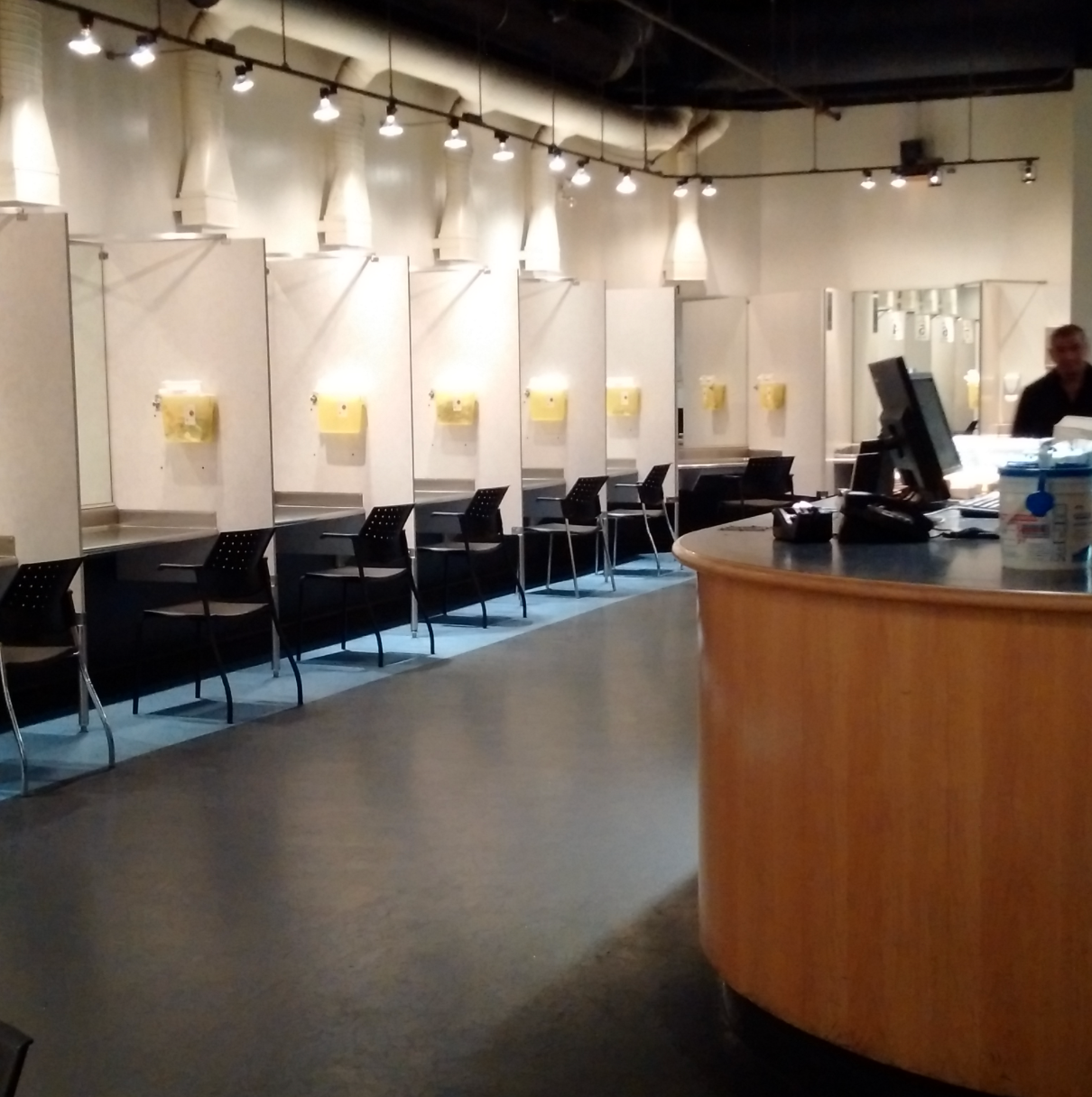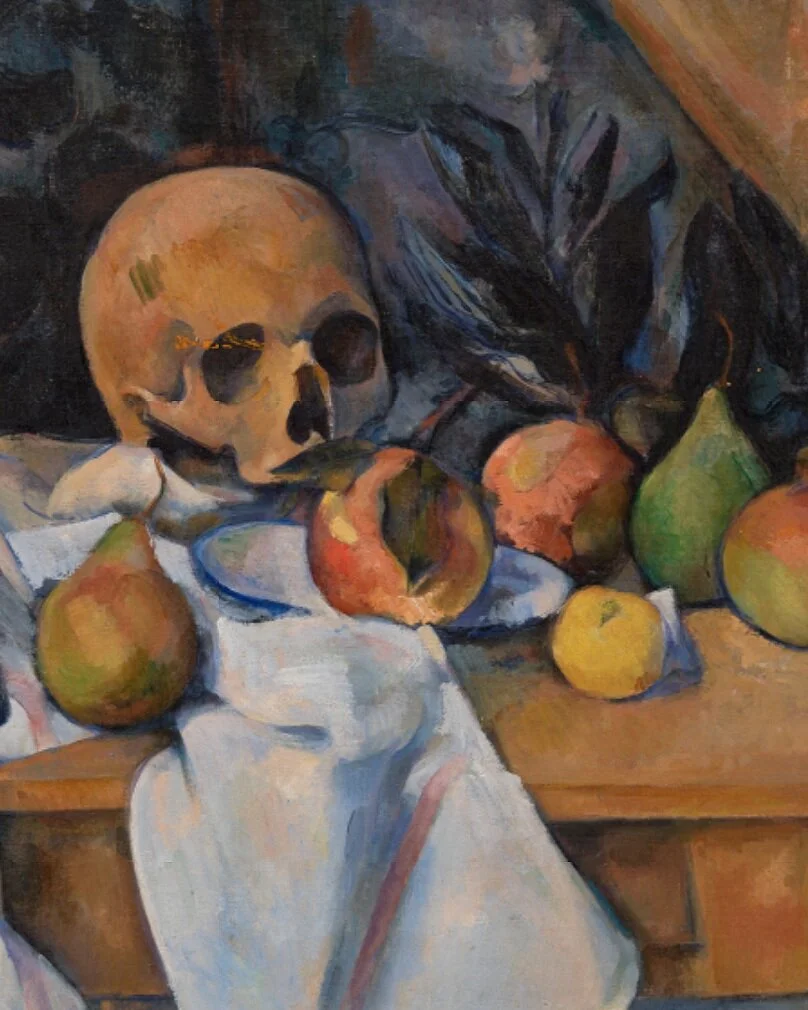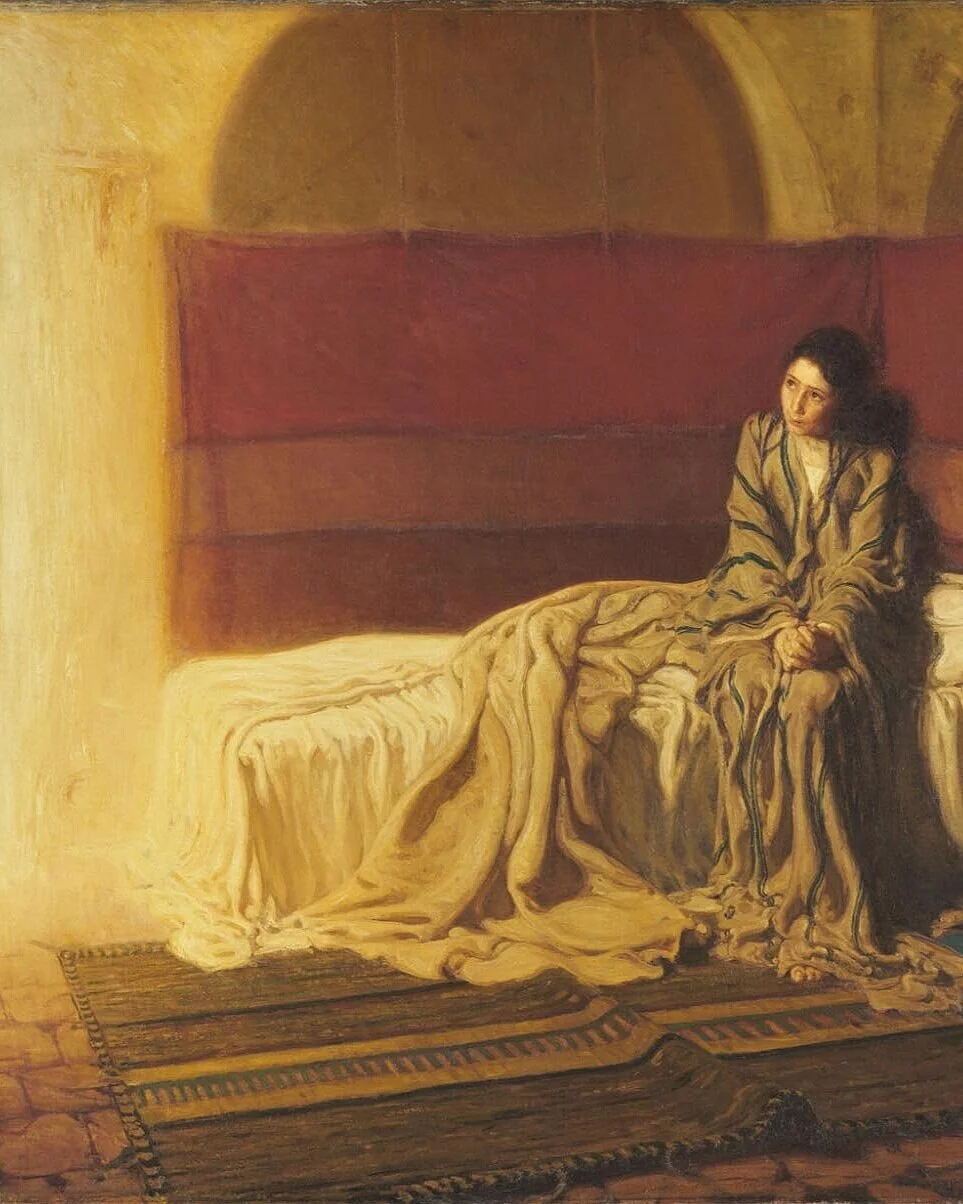Rx 30 / Morphinomaniac
An addict is someone who uses their body to tell society that something is wrong.
- Stella adler
On the heels of the Franco-Prussian War of 1871, fin-de-siècle France was enmeshed in collective existential anxiety about the degeneration of national health and the proliferation of social ills. As morphine addiction exploded to epidemic proportions amid a rampant drug culture across all strata of society, so too did representations of its users in the visual arts. Eugene Grasset was one of several printmakers of the Belle Époque era to characterize the “morphinomanes,” an Art Nouveau archetype of female moral bankruptcy. At a time when Japonisme in the arts was also popular, Morphinomaniac was inspired by a Japanese woodcut of the Yamauba, a popular folklore character. Identifiable by her unruly mane of dark hair and filthy kimono, the Yamauba is a woman of the wilds, known for catching children to nurse and eventually consume. Her one weakness was a flower, purported to contain her soul. The woman in Grasset’s vibrant, if putrid, lithograph falls prey to a flower of a different sort: the opium poppy.
Grasset’s Morphinomaniac depicts a crazed, desperate woman at the peak of opioid withdrawal, plunging a hypodermic needle into her thigh. The lurid yellow and green reverberate the illicit and exoticized nature of her actions. With swaths of ebony hair, porcelain skin, coquettishly exposed thigh and stocking, and agonized, frenzied expression, Grasset explicitly associates female sexual proclivity with drug addiction. Notably absent are scars or abscesses, common dermatologic afflictions wrought by repetitive use from the hypodermic needle. An audience in late nineteenth-century France would have instantly assumed this woman was a prostitute; at once fetishized and moralized by her sexuality and drug use, her erotic appeal alternates between repulsion and attraction. The print can be read as a counterpoint to more ‘respectable’— read, bourgeois—depictions of femininity from the period, such as Mary Cassatt’s paintings and etchings of women drinking tea or even prints of wealthy women using opium themselves. The distinction between these archetypes, then, was not drug use or lack thereof, but that well-to-do women consumed in moderation, while lower-class women resorted to excess.
As art historian Abigail Susik writes, the rise of commodity culture and socially stratified, recreational drug habits at the turn of the century can be understood as intertwined phenomena. Much of Grasset’s work, for example, was intended as advertising, and his logo work was occasioned by the birth of commercial graphic design. Even his fine art practice was embraced by the Jugendstil and Vienna Secession, two arts and crafts movements whose visual style was predicated on decadence and excess. In this print, however, Susik contends that “Grasset seems to purposefully pursue the dark alternative to his successful advertising images of women consuming commodities with either healthy satisfaction or jubilant freedom.”
reflections…
In accordance with the prevailing moralizing tendencies of the day, Grasset’s visual language implies that his subject’s addiction is a matter of personal choice and indeed, failing. What might a more historical or structural perspective imply about the origins of her drug use? And what role does Grasset’s oeuvre play in a system of visual culture amid the rise of industrial capitalism, the popularization of recreational opioids, and their shared dimensions of consumption?
Contemporary critic Charles Shaw, who was incarcerated for drug possession, wrote:
Industrial civilization—and its end product, consumerism—has disconnected us from nature, the cycle of life, our communities, our families and, ultimately, ourselves. This unnatural, inorganic, materialistic way of living, coupled with a marked decline in society’s moral and ethical standards—what the French call anomie—has created a kind of pathology that produces pain and emptiness, for which addictive behavior becomes the primary symptom and consumption the preferred drug of choice.
In other words, drug addiction—and by extension, addiction of any kind—is indicative of a deeper existential crisis of our time and the failures of a disconnected society to support those most vulnerable. How can clinicians and communities internalize Shaw’s perspective that an atomized, socially alienated society induces a “pain and emptiness,” thereby facilitating the architecture for addiction? What might recovery look like if healthcare recognized addiction as the failing of a society and not the individual?
Consider the plan for a recently opposed safe-injection site in Philadelphia, which would have brought opioid users from Kensington, an epicenter of the opioid epidemic, to a more centrally located facility to receive supervised care. The plan was modeled in part on InSite, a safeinjection site in Vancouver which addresses the invisibility of addiction in its very design. As The Architect’s Newspaper reported, “Designing for anonymity and privacy, unfortunately, is paradoxical to health and well-being in the context of addiction. There is no hiding at InSite, but this is a good thing. Within the injection room, there are 13 booths, which line the interior perimeter, allowing nurses a clear line of sight into each.” The small, three-sided, mirrored booths “provide moments of self-reflection in addition to helping users inject safely.” In this way, the safe-injection site recognizes that being seen, intimately and without judgment, is essential to caregiving and community. How can clinicians and clinics be conscientious of the relationship between visibility, kindness, and recovery?
Once addiction becomes visible—whether within families, communities, or the clinical encounter—how does it begin to shed its personal, affective, and emotional dimensions, simultaneously becoming everyone’s and no one’s problem? While addiction touches many of us in deeply personal ways, if we find ourselves or a loved one struggling with addiction or recovery, how does rendering illicit activity visible create tension within a society that wishes to maintain distance and assign stigma? How can clinicians help those impacted better navigate recovery and reclaim identity and a sense of belonging amid deeply rooted aversion?
sources
Cembalest, Robin. “The Evil-Looking Women Drug Addicts of French Belle Epoque Art.” ARTnews.com, ARTnews.com, 18 Nov. 2019, www.artnews.com/art-news/news/the-evil-looking-women-drug-addicts-of-french-belle-epoque-art-2408/.
Gordon, Elana. “Lessons from Vancouver: U.S. Cities Consider Supervised Injection Facilities.” WHYY, WHYY, 6 July 2018, whyy.org/segments/lessons-from-vancouver-u-s-cities-consider-supervised-injection-facilities/.
Sayer, Jason. “A Whole New Breed of Architecture Can Help Fight Drug Addiction.” The Architect's Newspaper, 19 June 2017, www.archpaper.com/2017/06/architecture-drug-addiction-feature/.
Shaw, Charles. Viewing Consumer Culture through the Lens of Addiction. 17 Nov. 2011, www.huffpost.com/entry/viewing-consumer-culture_b_105750.
Susik A. (2014) “Consuming and Consumed: Woman as Habituée in Eugène Grasset’s Morphinomaniac.” In: Härmänmaa M., Nissen C. (eds) Decadence, Degeneration, and the End. Palgrave Macmillan, New York. https://doi.org/10.1057/9781137470867_7.
“Tea and Morphine: Women in Paris, 1880 to 1914.” Hammer Museum, hammer.ucla.edu/exhibitions/2014/tea-and-morphine-women-in-paris-1880-to-1914.
“Yama-Uba.” Wikipedia, Wikimedia Foundation, 31 Jan. 2021, en.wikipedia.org/wiki/Yama-uba#cite_ref-13.










